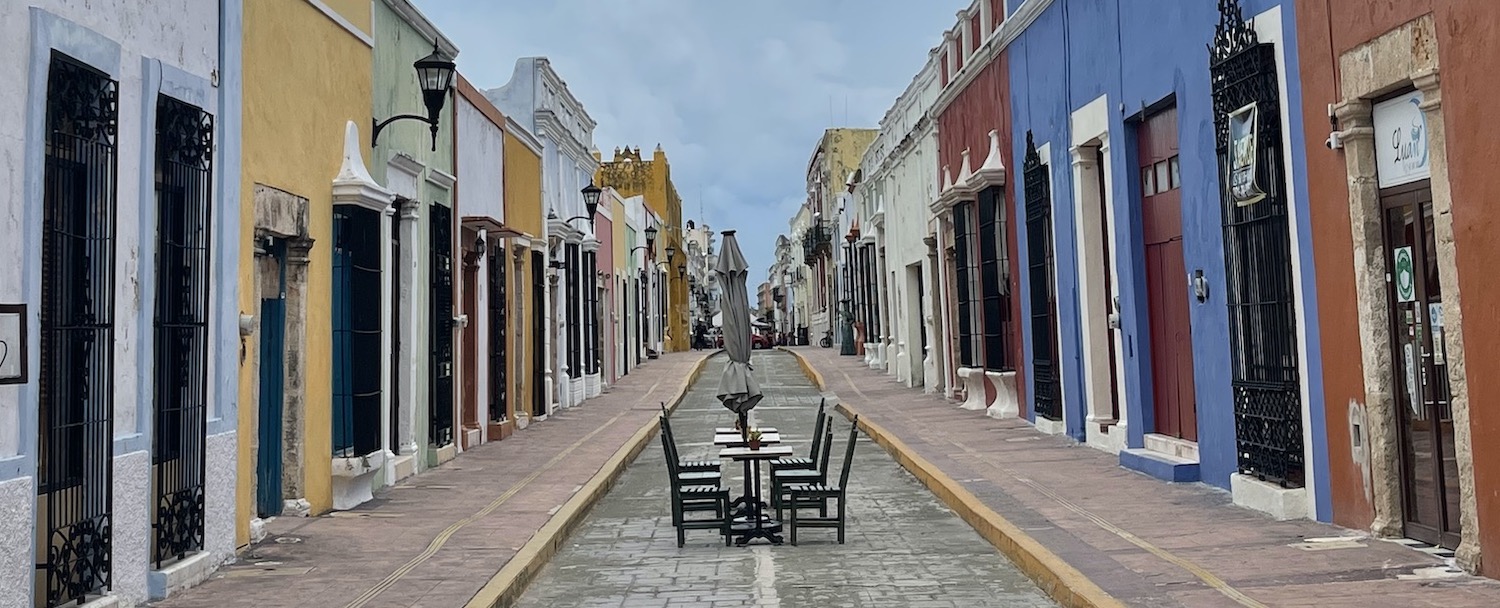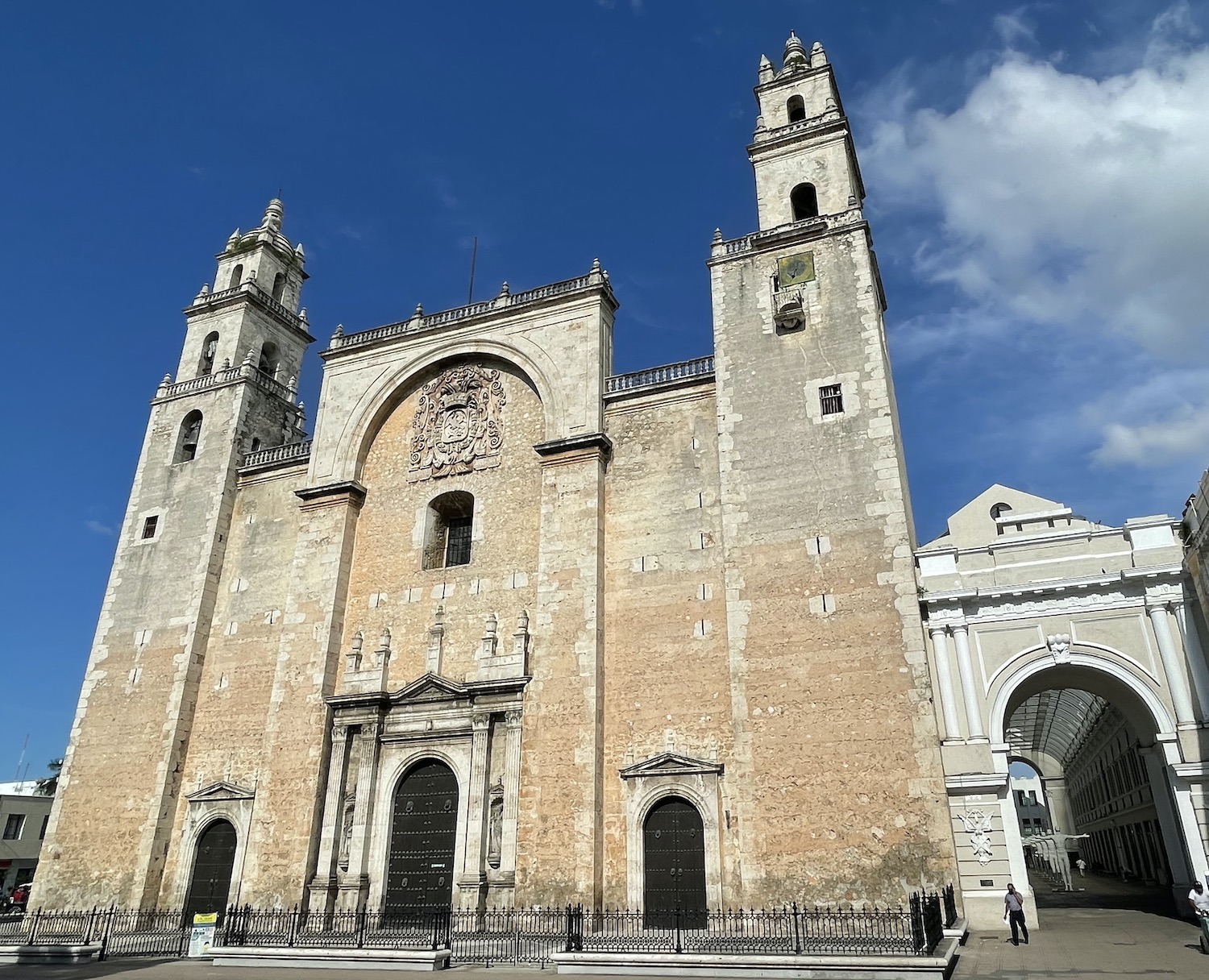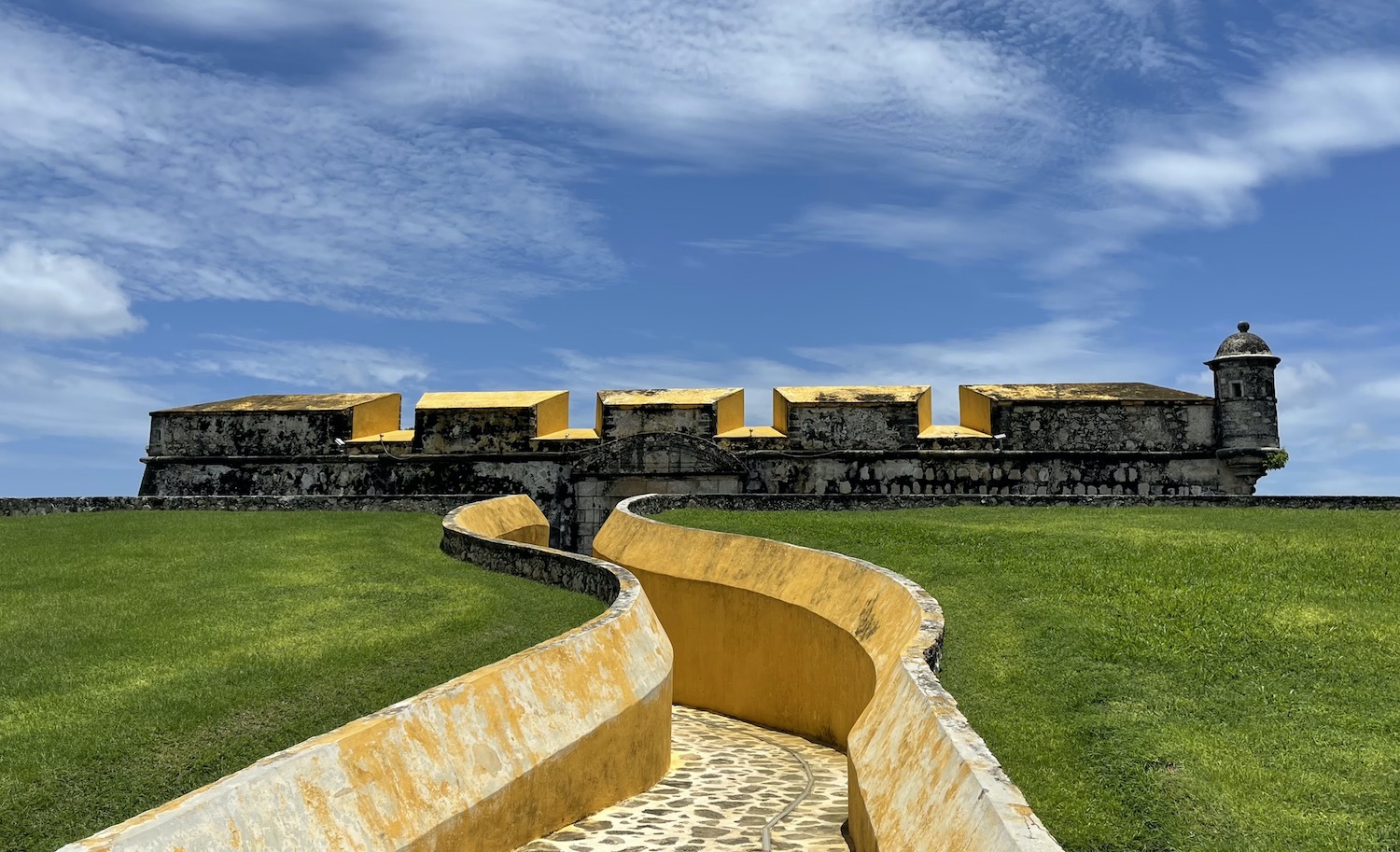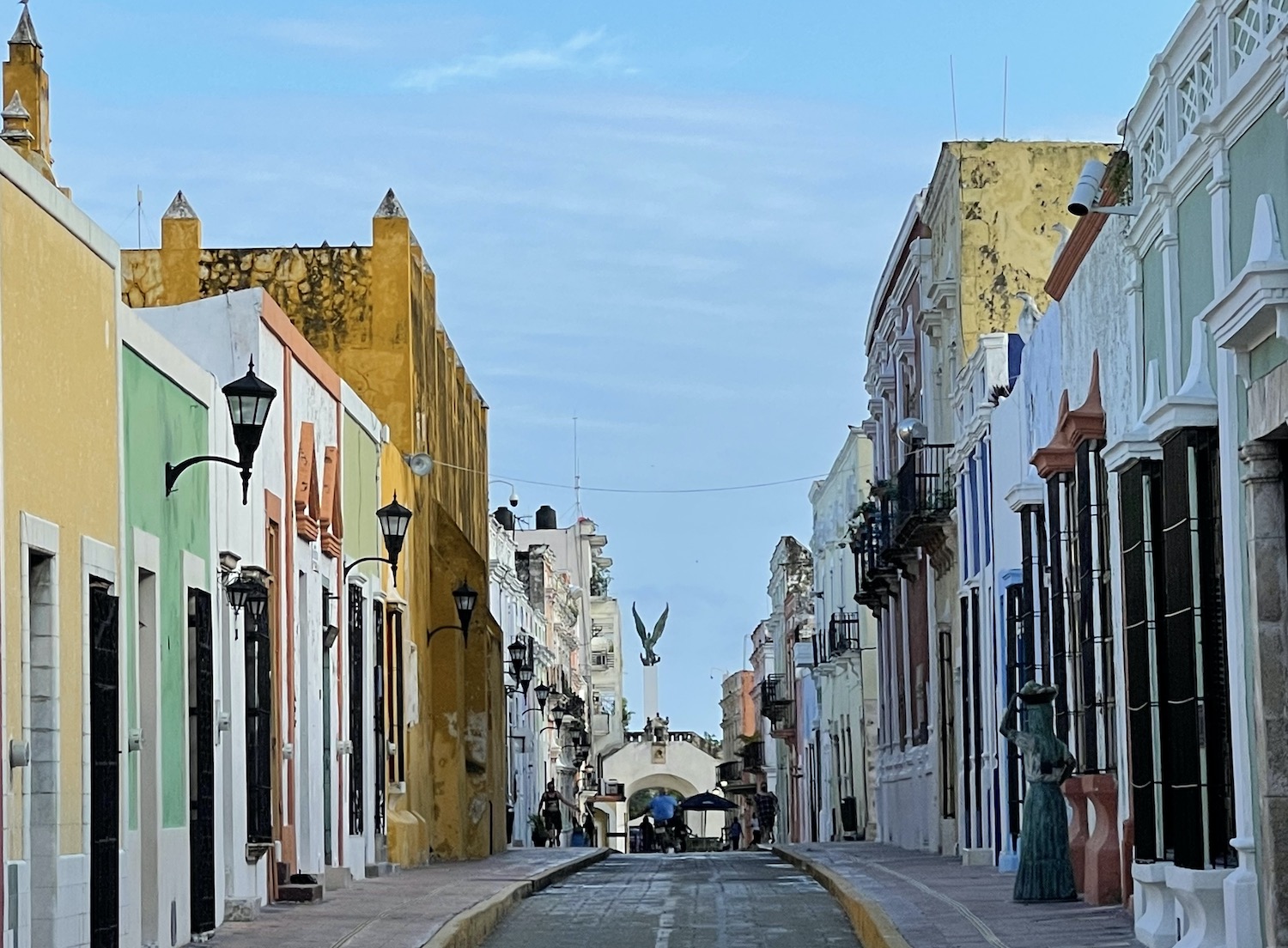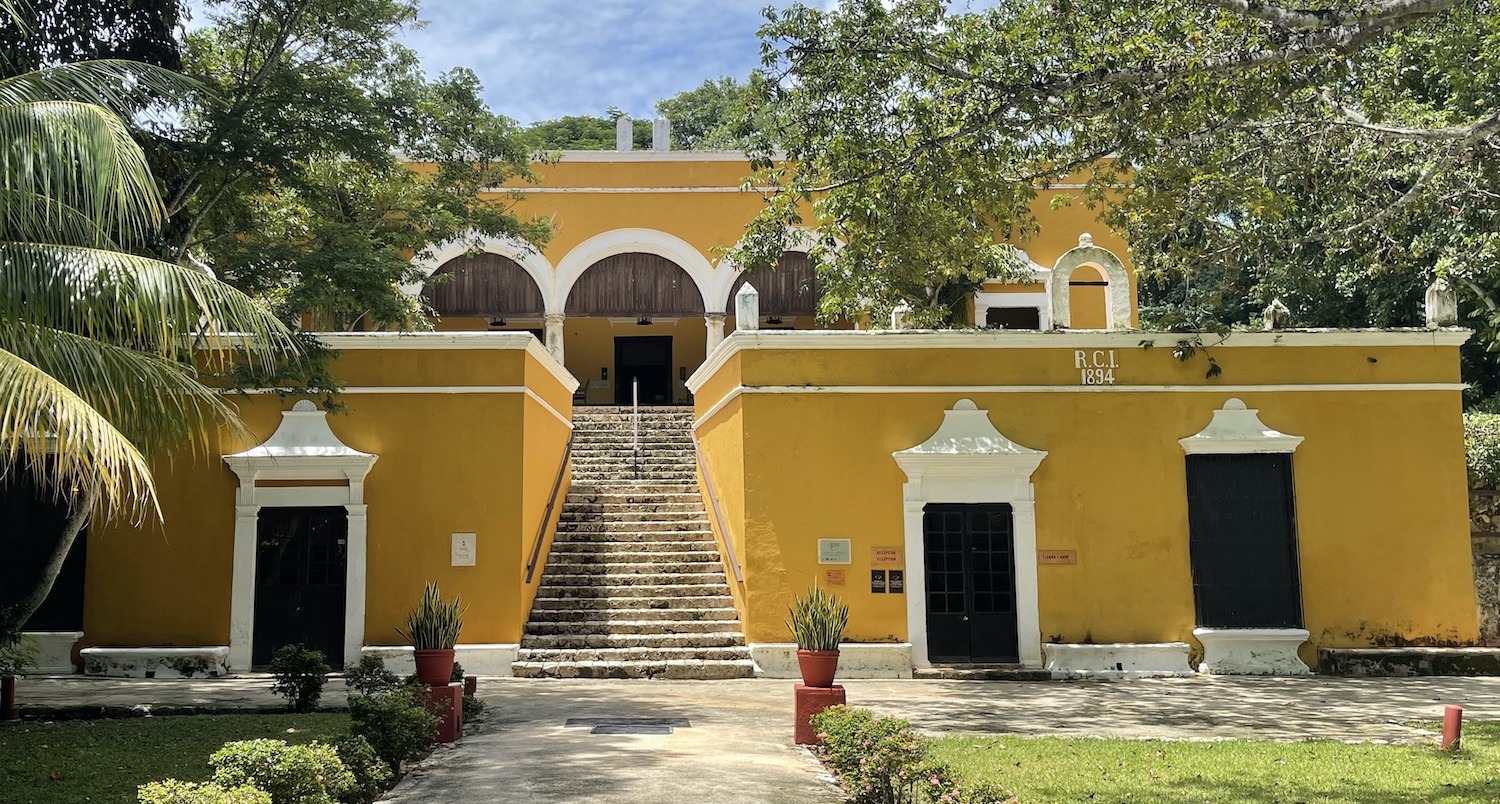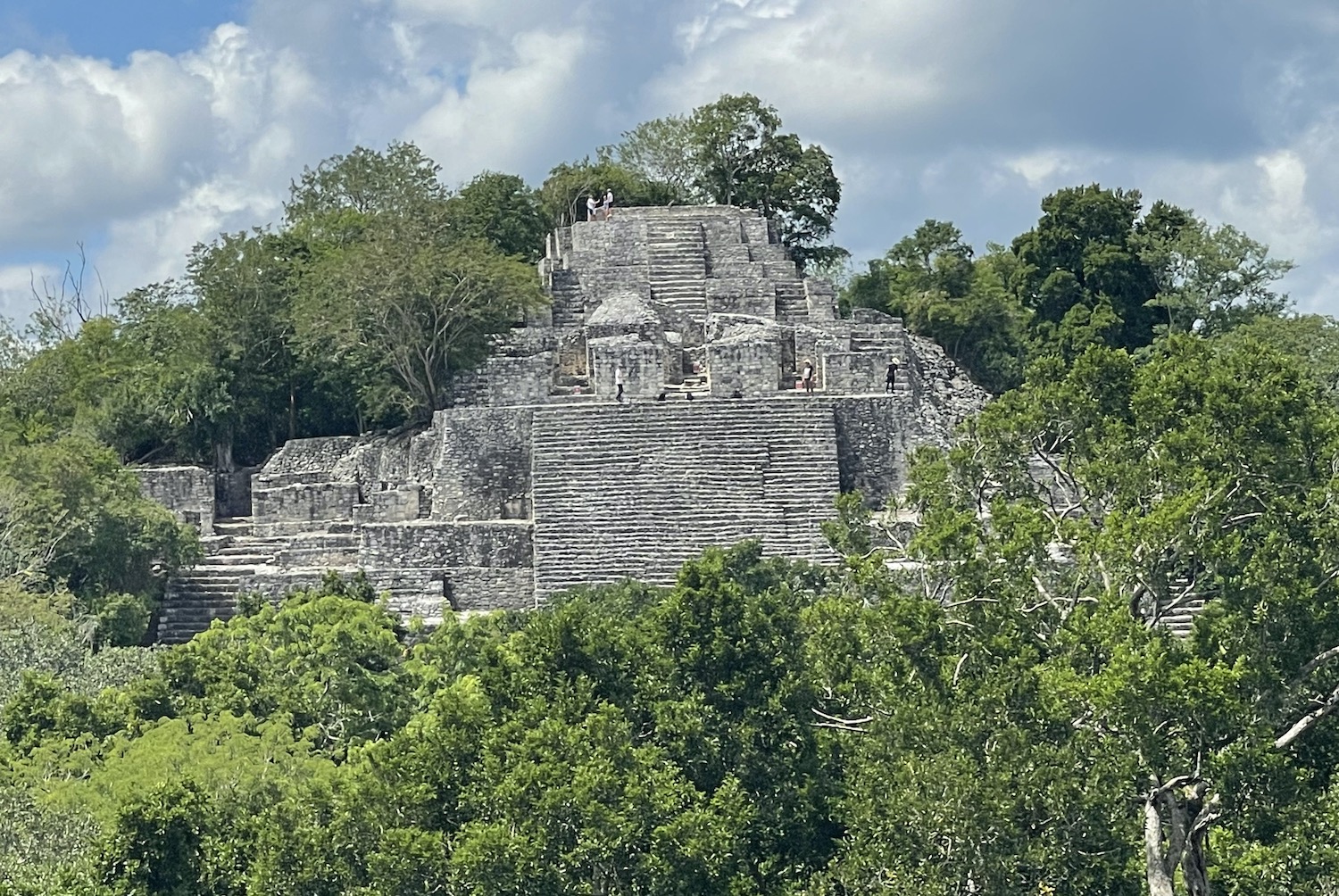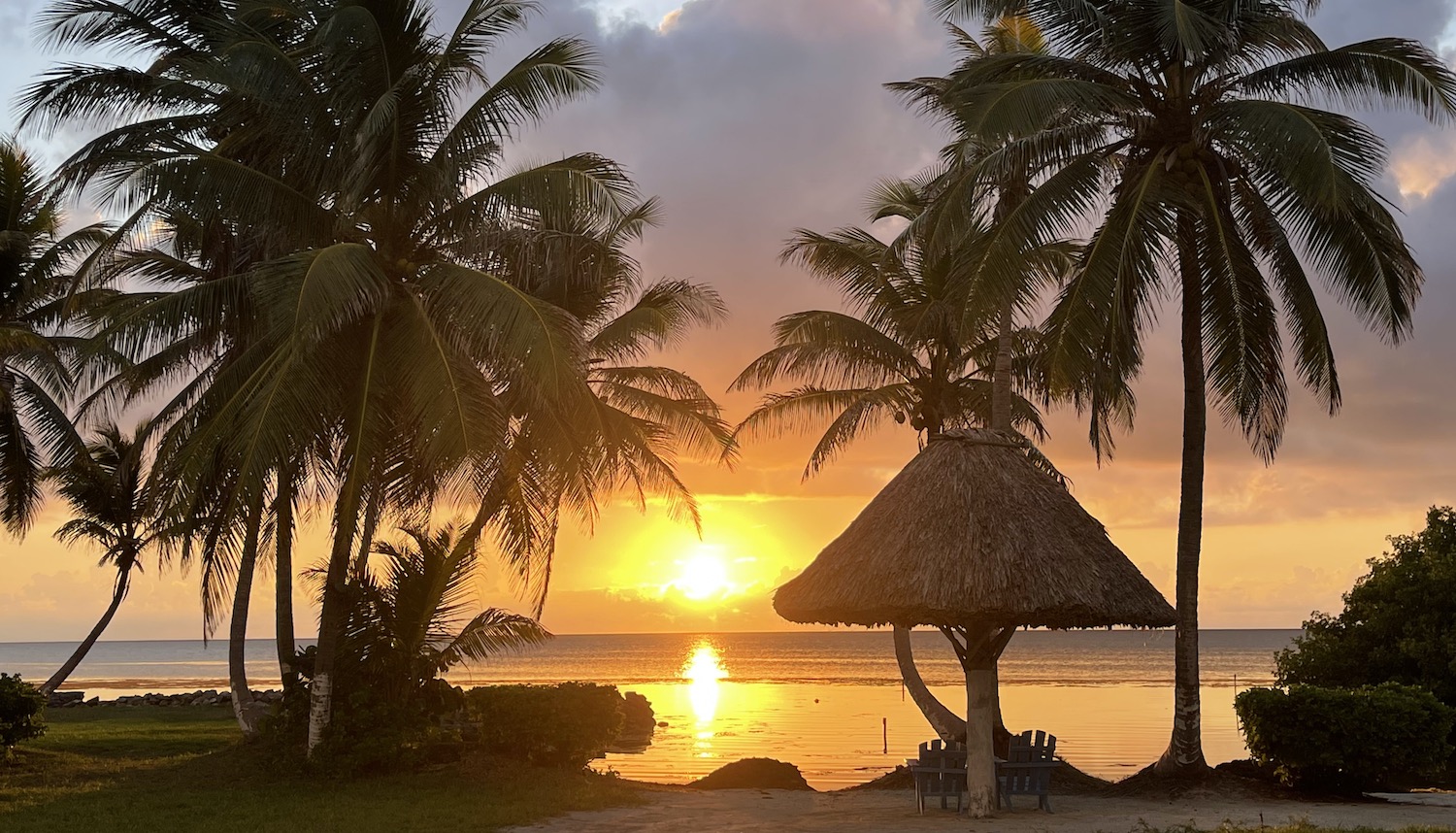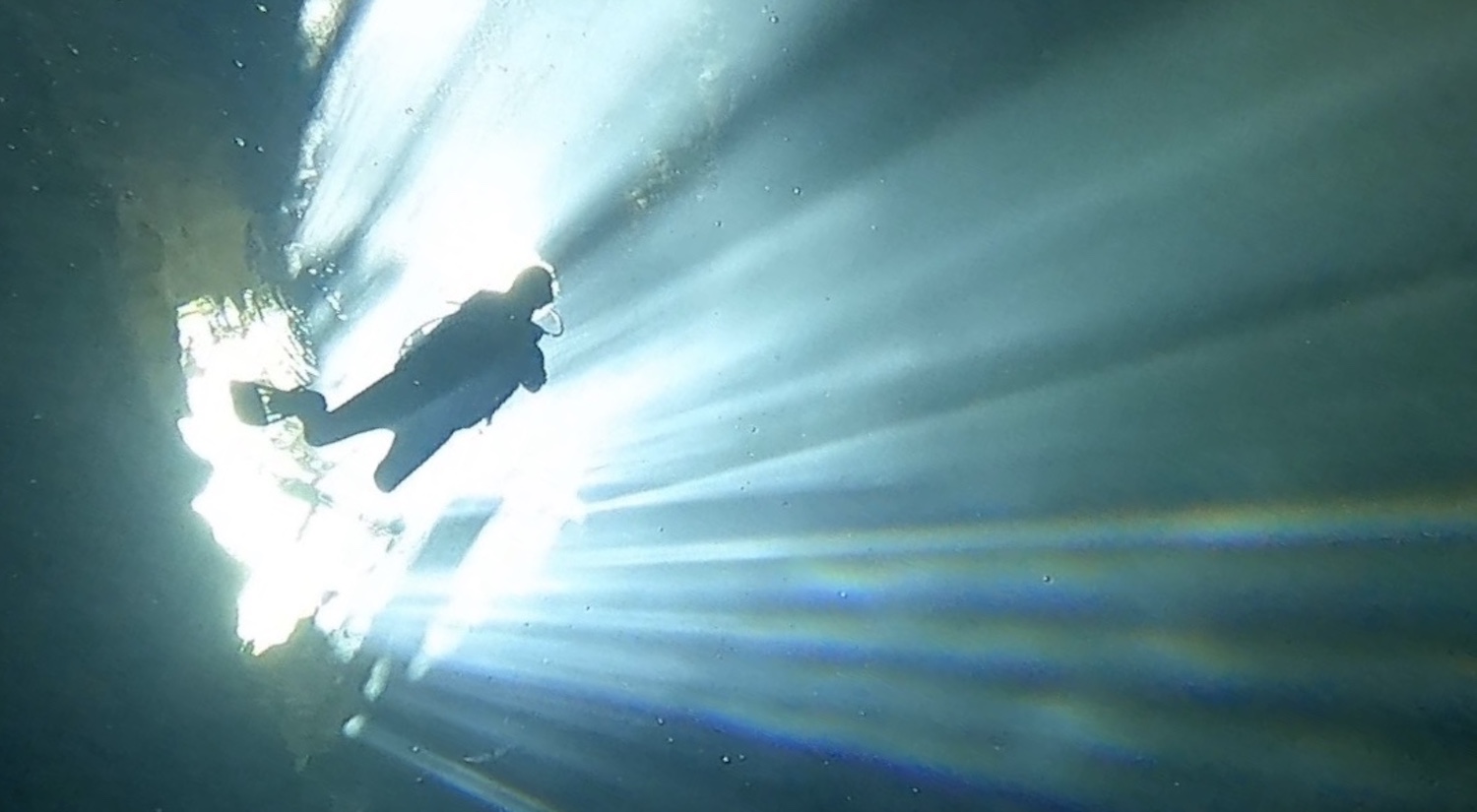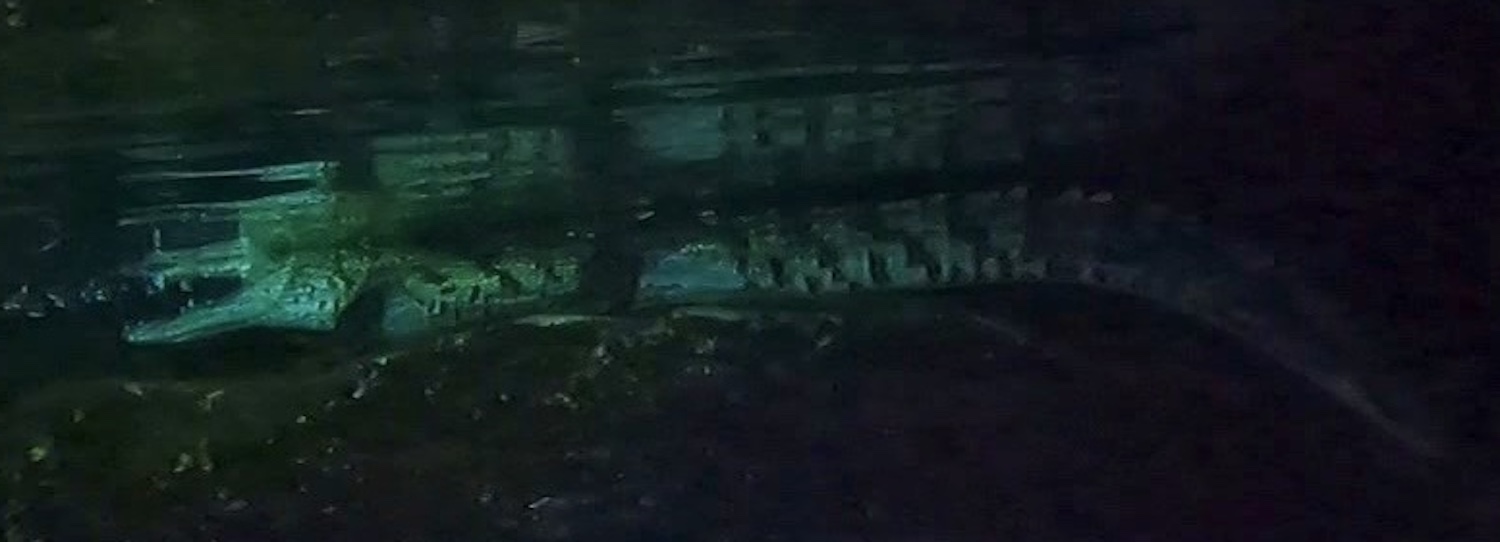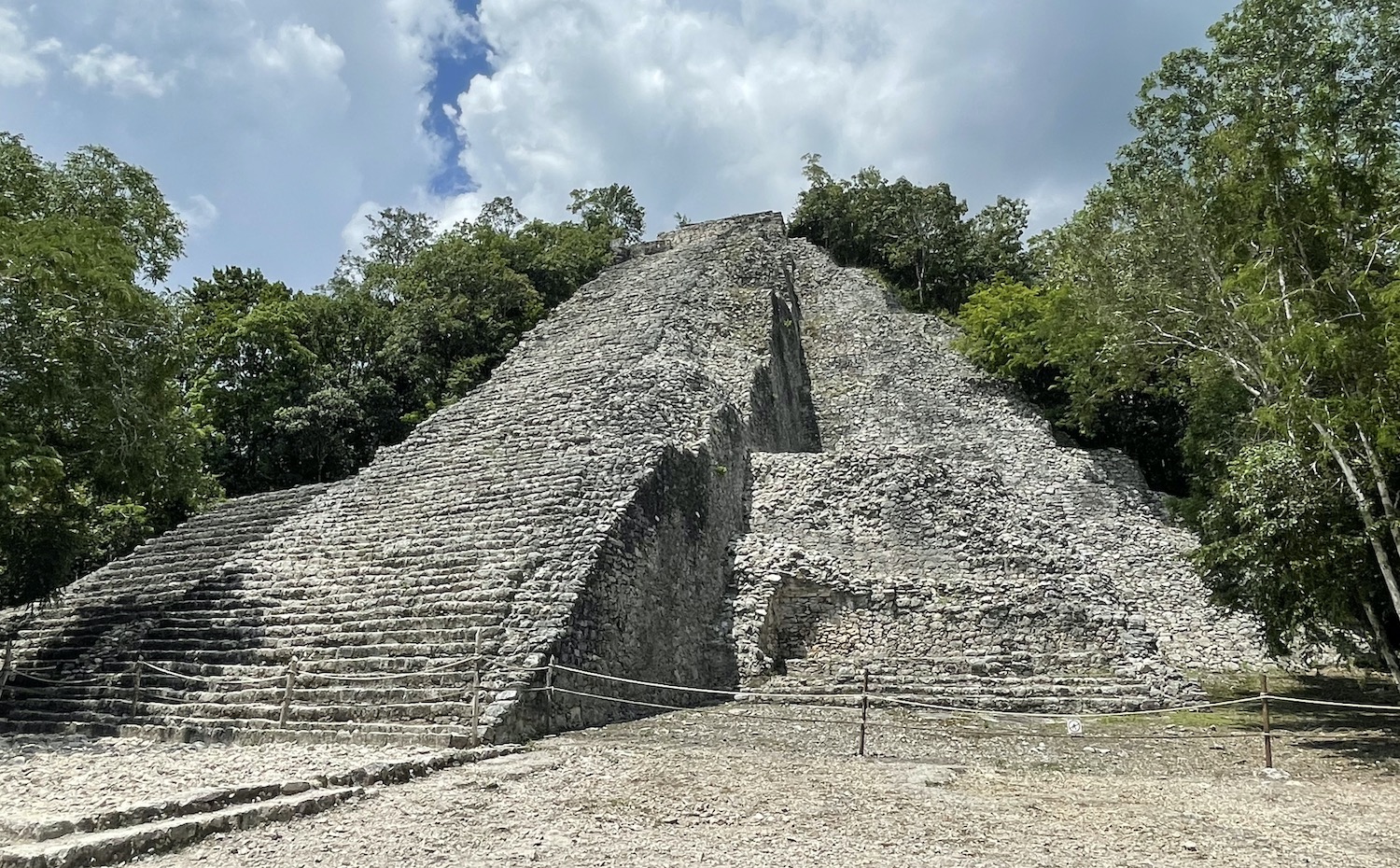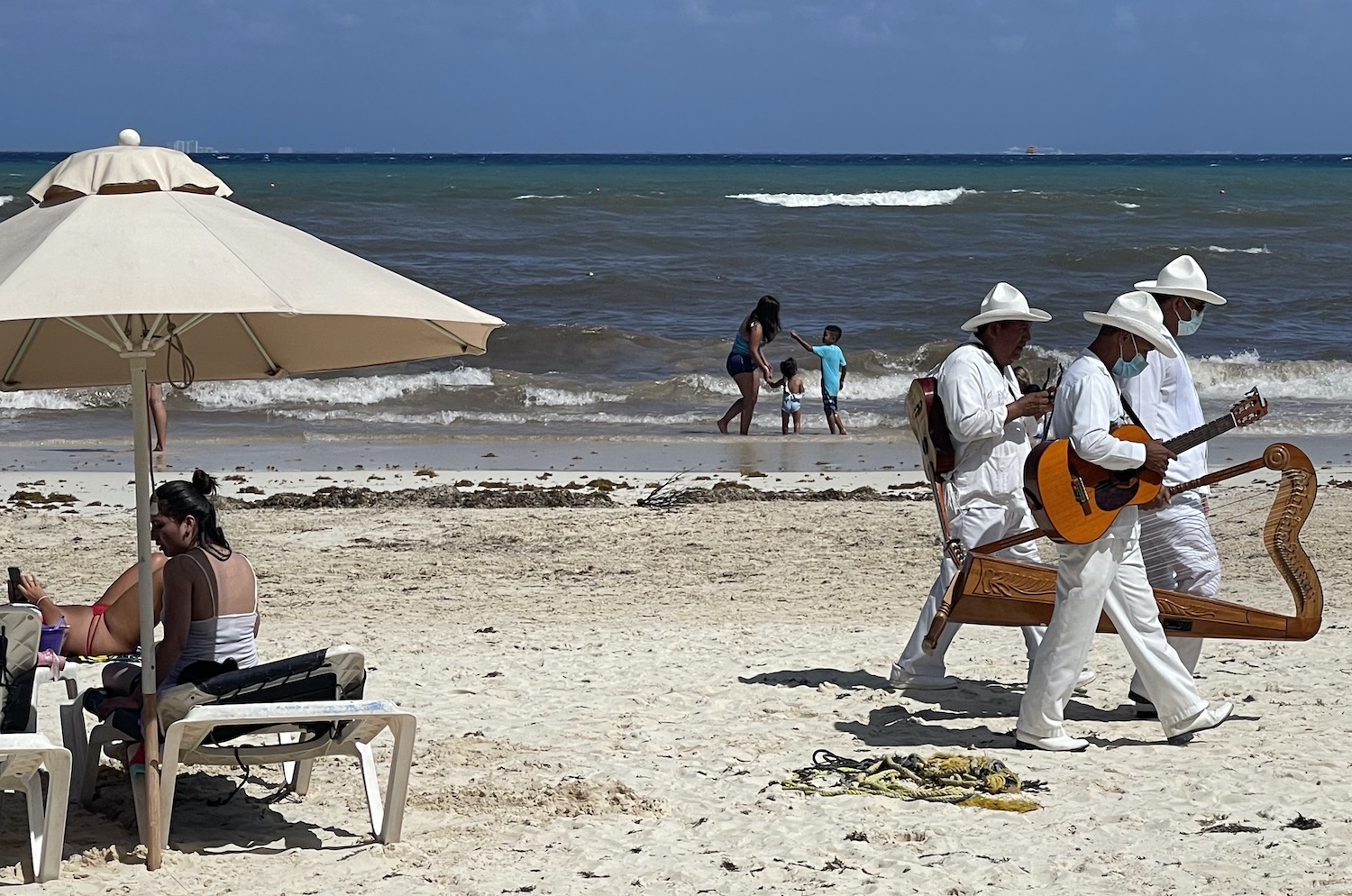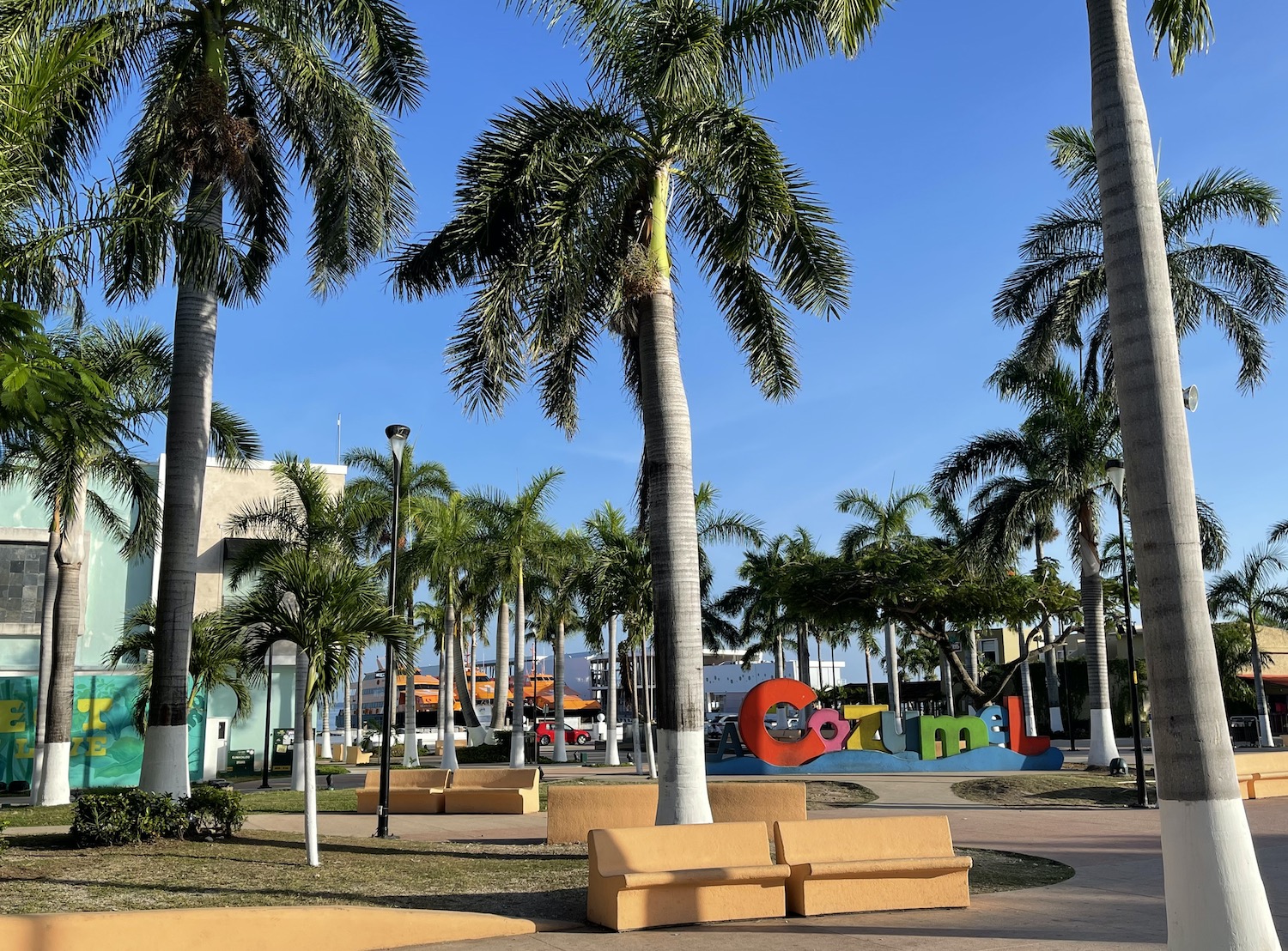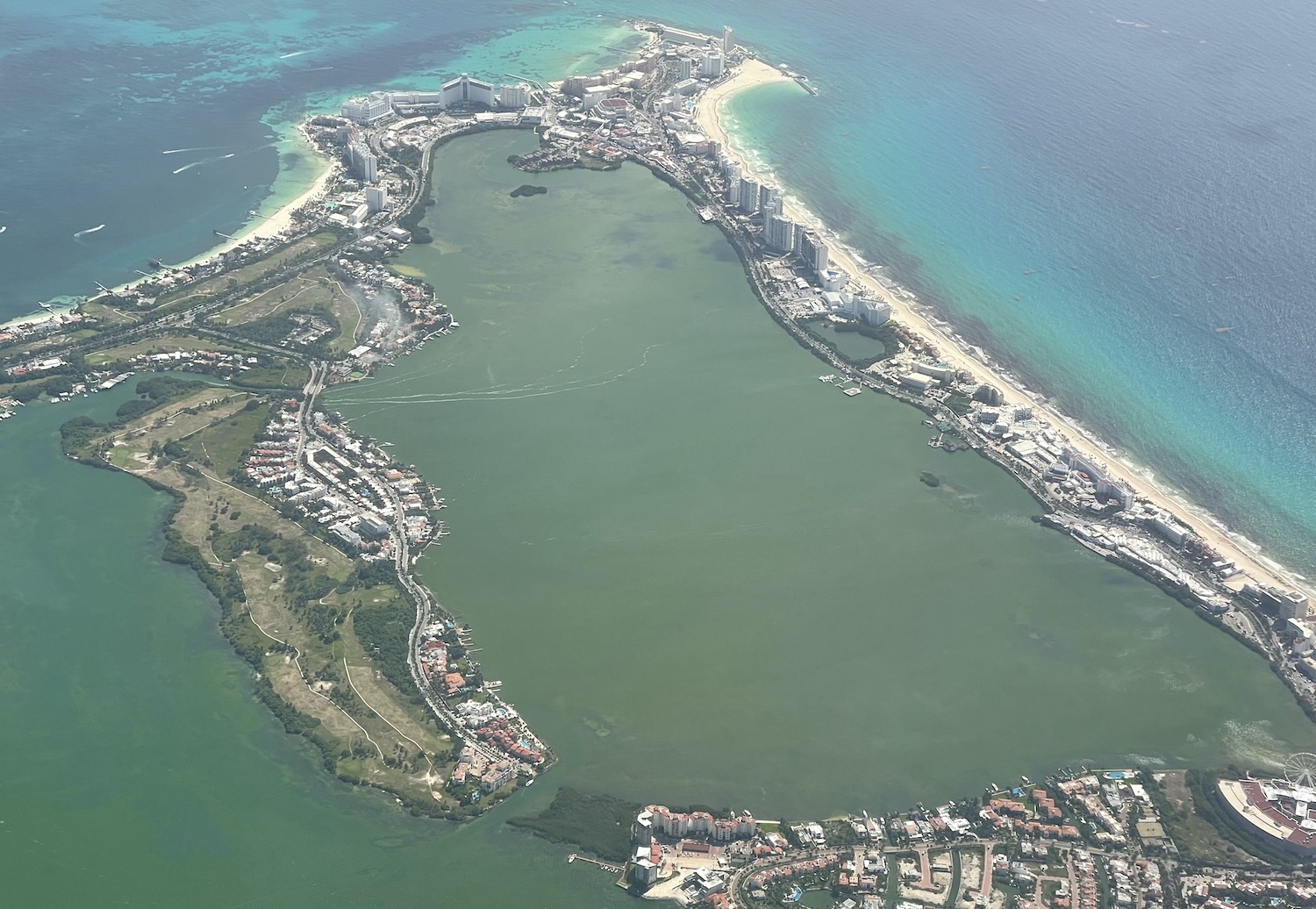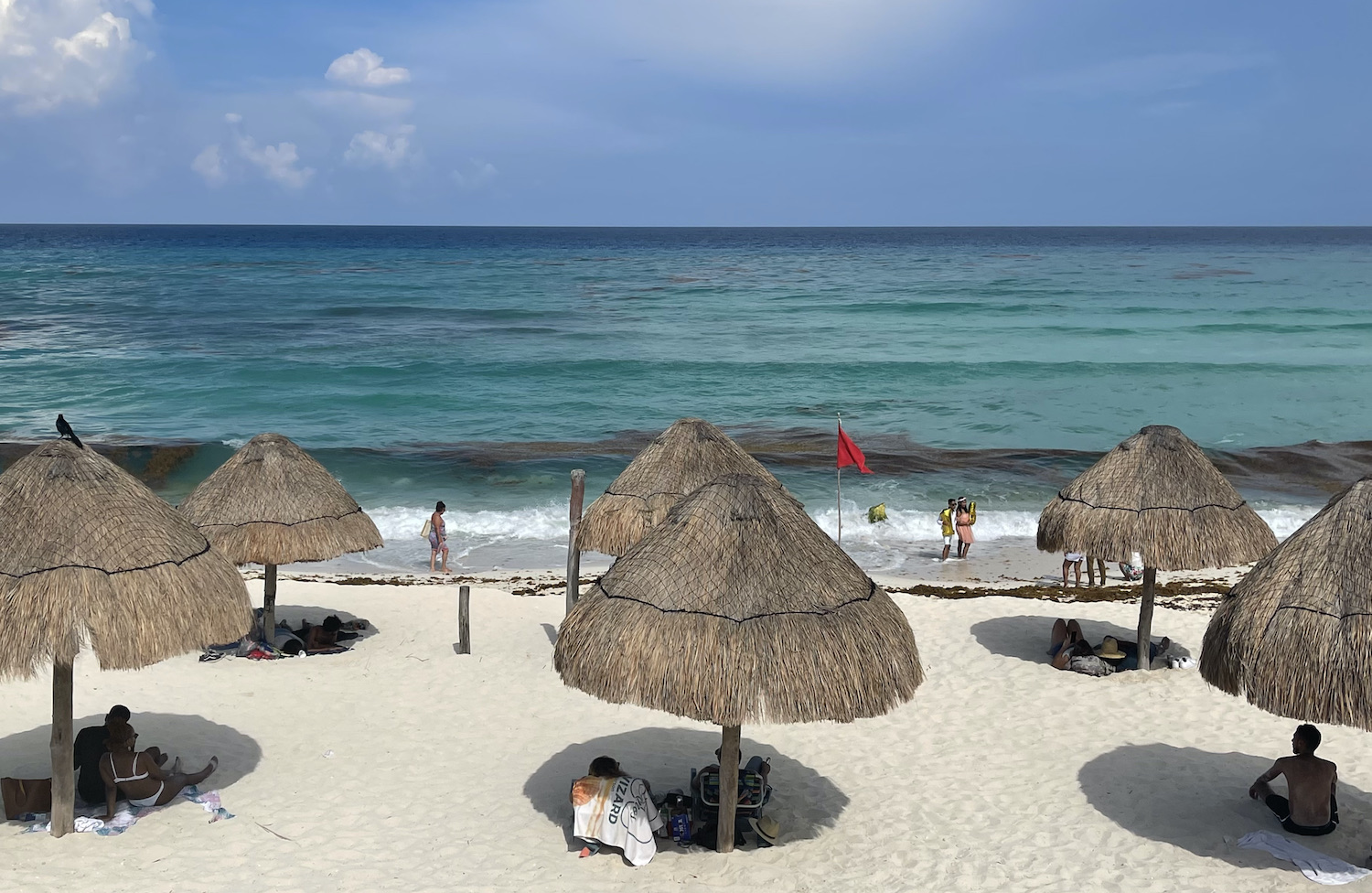The Yucatán Peninsula is by far the most visited region of Mexico, largely because of the appeal to a certain kind of holidaymaker of Cancún and the day trips they can do from there. But, chicos, the Peninsula also contains much more adventurous destinations in each of its three states: Yucatán itself in the north, Campeche in the west, and Quintana Roo along the east coast. With a little imagination and a bit of effort, amigos, you can get way beyond the obvious and beat your own path to magical parts of Mexico that offer remote colourful towns and seldom seen Mayan ruins hidden deep in the jungle as well as deserted beaches and exciting scuba dives.
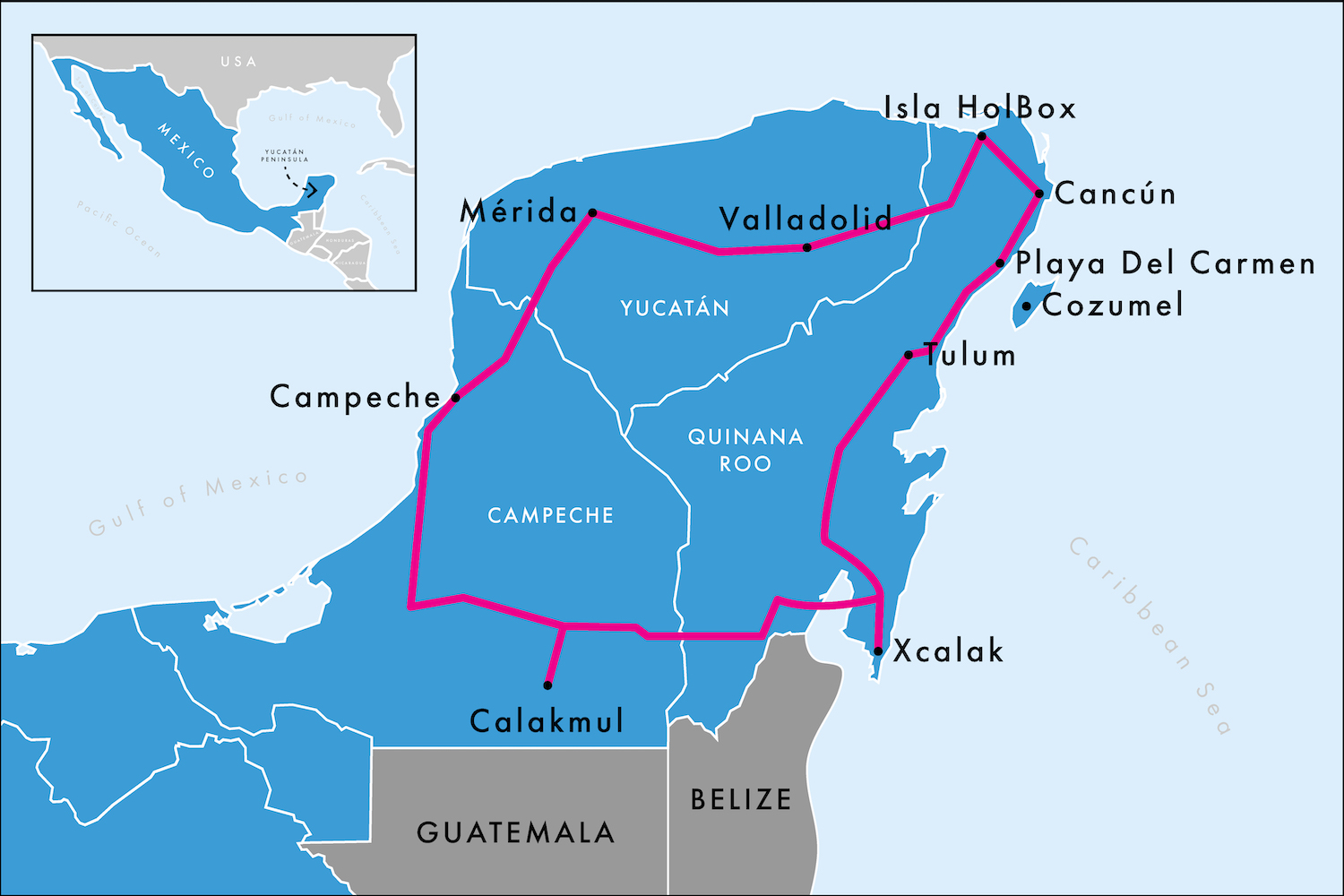
We came during the Covid-restricted summer of 2021, largely because there was no quarantine requirement, only minor curbs on activity, and very few local cases. It felt like it could be the perfect escape; and it was. Many tourists were stopped by travel bans or deterred by Mexico’s four-step system for identifying restrictions on a state-by-state basis which put Quintana Roo on the second highest level. In reality, however, that meant always wearing masks outdoors, hotels at 60% capacity, and curfews from 11pm; but none of that is very arduous. So even Cancún was pretty empty and less scary than it is normally, the big ticket attractions were accessible without queueing, and yet the off-piste sites were all open.
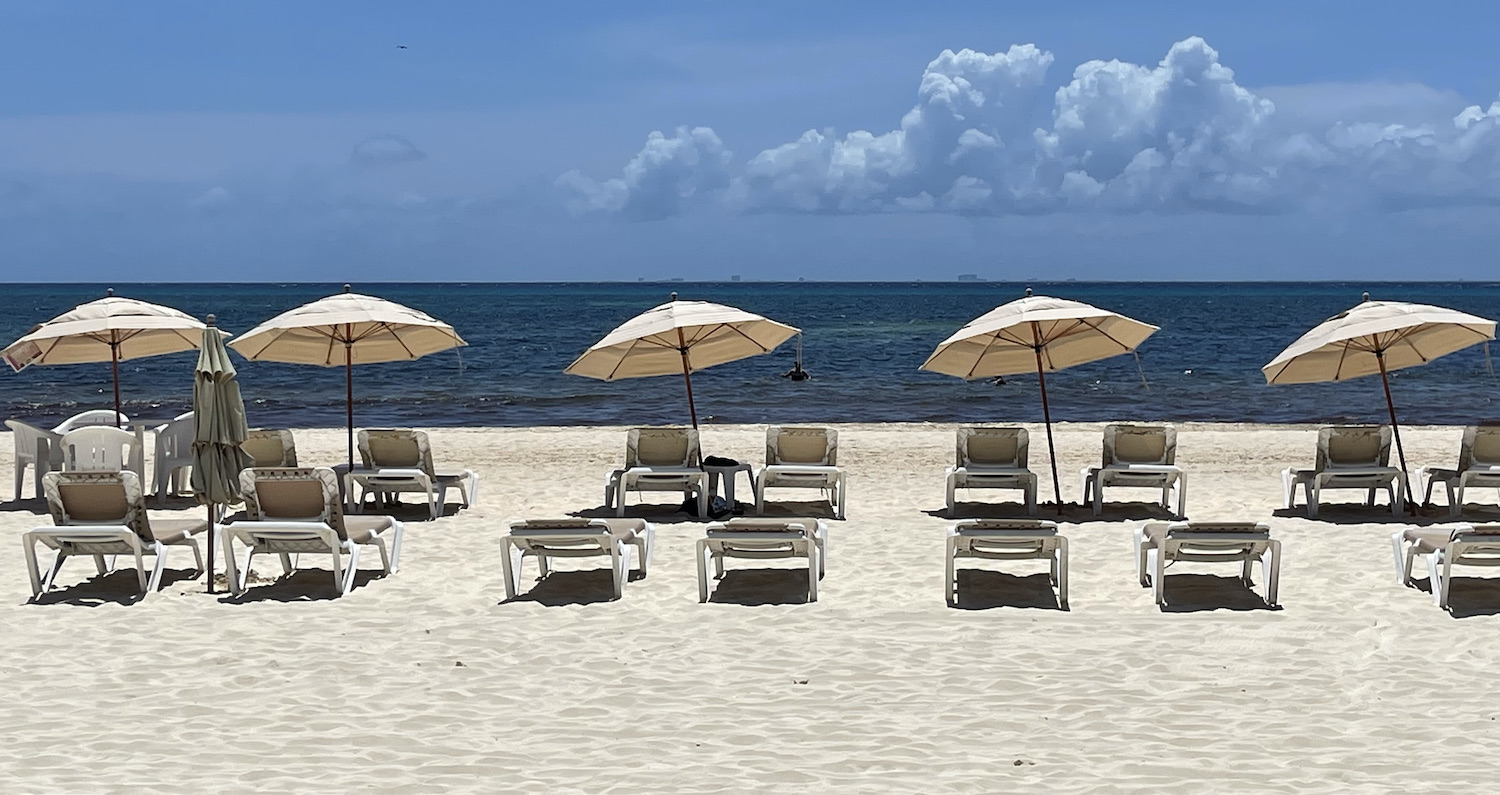
High season is December to April anyway, though there are usually significant numbers of visitors in the summer. The weather is hot then, and there is a risk of hurricanes. In fact, we were trapped for a few days in mid-August in Cozumel when the first one of the season attacked the Yucatán coast. Hurricane Grace, with winds of 200 kilometres per hour, closed all transport connections. One minute Playa del Carmen was bright blue as usual, then a couple of hours later in Cozumel a thick black cloud blotted out the sky. Shops and bars closed early, boarded up with wooden barriers and sandbags. The wind and rain certainly lashed for about twelve hours, sargassum seaweed that is common all along this coast was brought up high on to the beaches and a few trees were taken down, but there was no real harm done, there are a lot worse places to be stuck, and everything returned to normal very quickly.

The main entry point to the Peninsula is of course through Cancún – the airport is just 20 minutes south of the city – and our route circled in an anti-clockwise direction from there. We hired a Wrangler Jeep to go off road and the trip took about three weeks.
North Quintana Roo
Just a couple of hours from Cancún, Isla Holbox (pronounced “Hol-bosh”) off the north coast is in fact a world away. The road passes through small towns where tuk-tuks buzz around and deteriorates the closer you get to Chiquila, the busy little marina town where your car gets valet parked and you jump on a ferry. The blue 9 Hermanos goes on the hour, the red Holbox Express goes on the half-hour, and you can buy tickets all over town for the 30 minute ride. The island is basically a 40km-long 1.5km-wide sandbar, separated from the mainland by the 10km shallow Laguna Conil that is rich in birdlife.
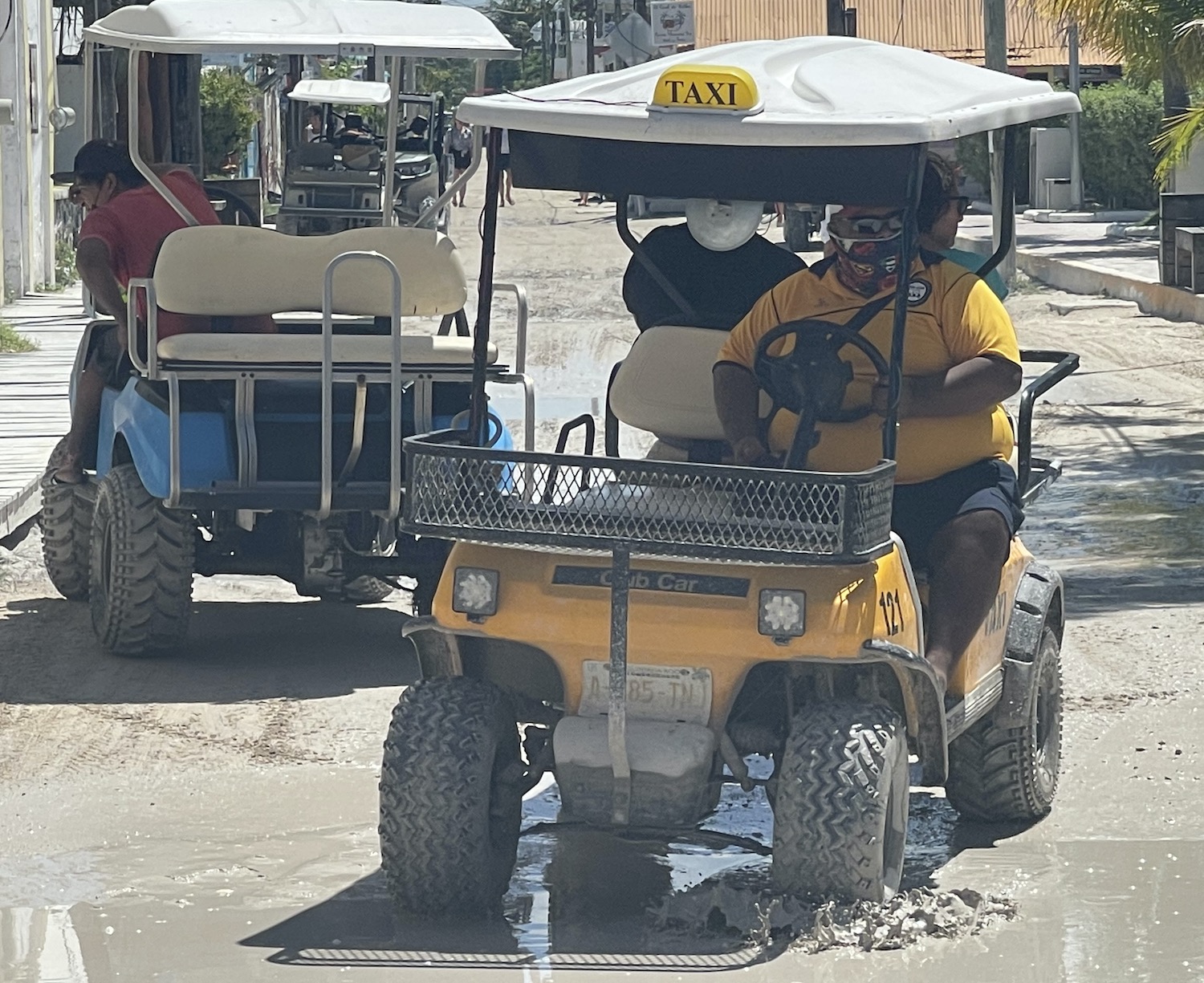
There is only one settlement around here and it is exactly what a chilled beach community should feel like. Sandy streets that turn muddy in the rain, on which people pad about in swimwear or zoom along in golfcarts-cum-quad bikes. Colourful buildings that harbour a diverse crowd of Mexican and European backpackers and high enders, all with a hippie chic. Sympathetically designed beach clubs, hotels and bars, swung with hammocks under palm trees, that run for 3km, offering the perfect place for a BBQ, a margarita, a paloma cocktail or an unfortunately-named Corona beer, while the sun sets right in front of you.

An additional attraction here between May and September is the largest aggregation in the world of whale sharks. You can visit them on any one of dozens of little panga boats that depart the main pier first thing each morning, taking up to two hours to get east beyond the sandbar to reach the open sea. Swimming with whale sharks in other places can often be a bit of a disrespectful free-for-all, but here we are carefully marshalled in pairs at a time while other boats wait patiently, resulting in better care for and better views of these magnificent fish.
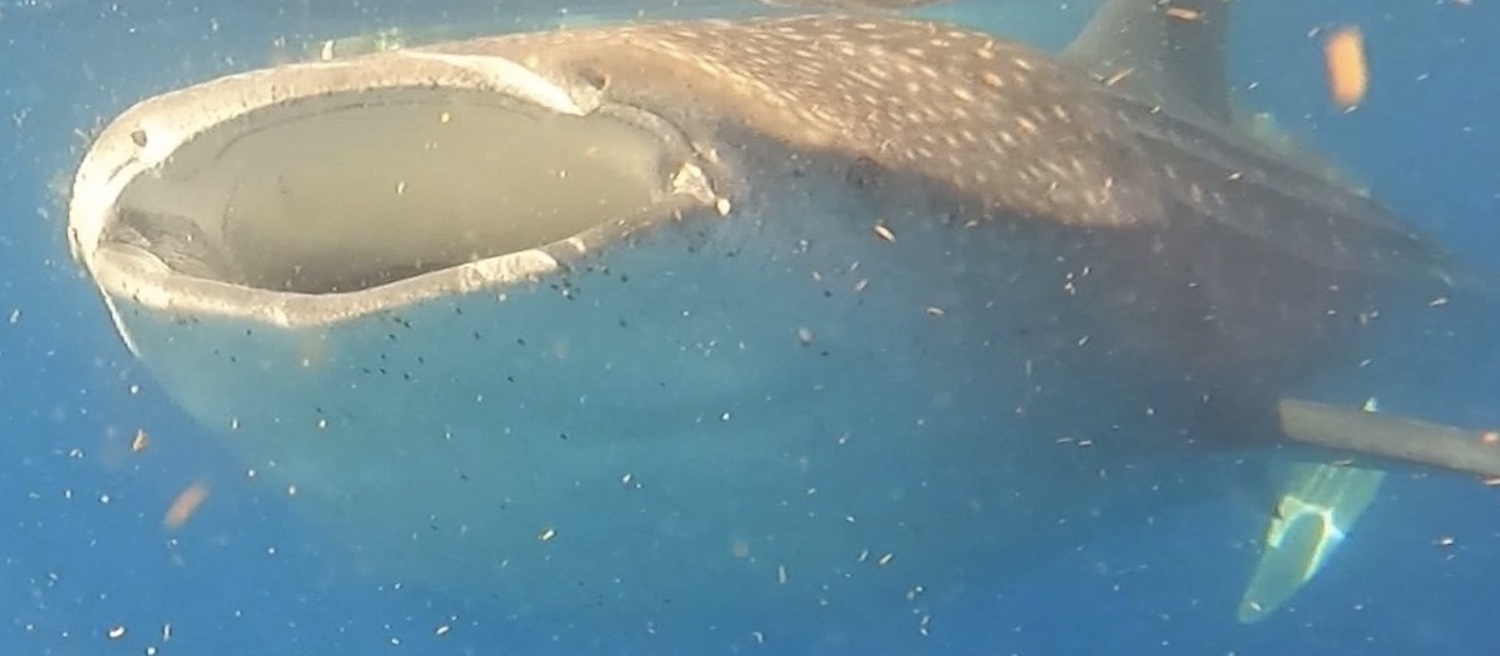
After a sumptuous guacamole and shrimp ceviche lunch on a deserted beach, we also jump in with mantas and dolphins before hanging out with pink flamingos. You can also see them at Celustún, 50km along the coast in Yucatán, from where they fly here each day to feed. By the afternoon the plankton the whale sharks have come for has turned the entire sea a gorgeous teal green like Fortnum and Mason’s colour.
Yucatán
In the state of Yucatán to the south-west of Holbox, Valladolid is a pretty pueblos typical of those around here. The roads are in a grid pattern, with even-numbered roads running north-south and odd east-west. There are pastel-coloured colonial buildings in the handful of streets around the main square or zocalo that is dominated by the Cathedral de San Servacio (intriguingly, the only church in Yucatán to have its entrance facing the north not the east). Nearby, the Parque Principal Francisco Cantón Rosado is surrounded by restaurants and shops. Valladolid makes a pleasant stopover on the road west.
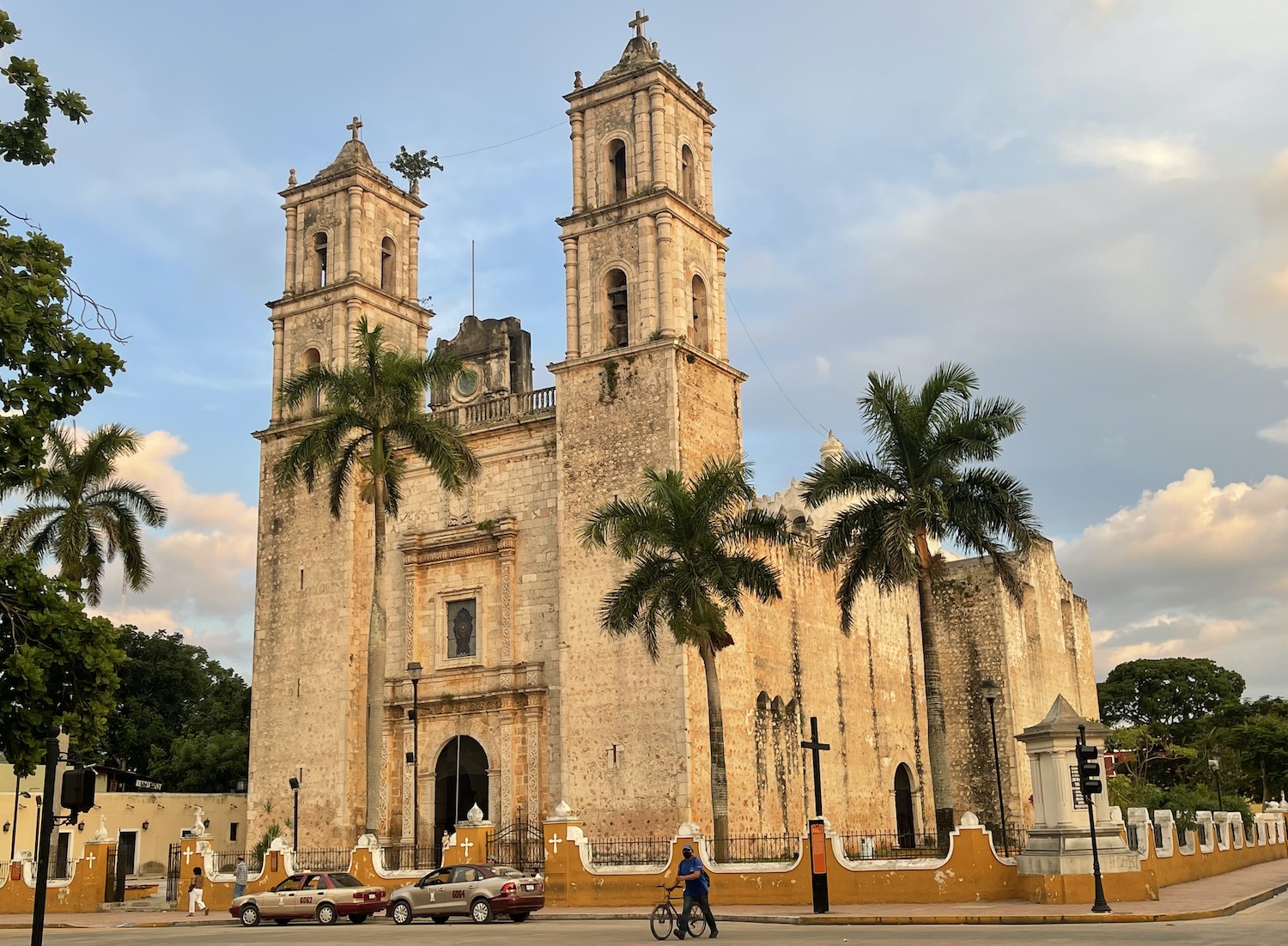
Probably because Chichén Itzá is accessible to the bus tours from Cancún and is therefore the most visited attraction in the whole of Mexico, it was recently named one of the New Seven Wonders Of The World in some popular vote, a fact advertised everywhere. Yet it is a dispiriting experience, horribly overrun by hawkers selling tourist junk and guides getting their clients to pose for silly photos.
The ballcourt, the biggest at all thirteen similar sites in the Americas, is at one end, opposite the pillars that lead to the observatory at the other. In the middle is the main pyramid, which is fine but certainly not outstanding. We were lucky that during Covid there were fewer tourists than usual but I imagine it is usually hideous.
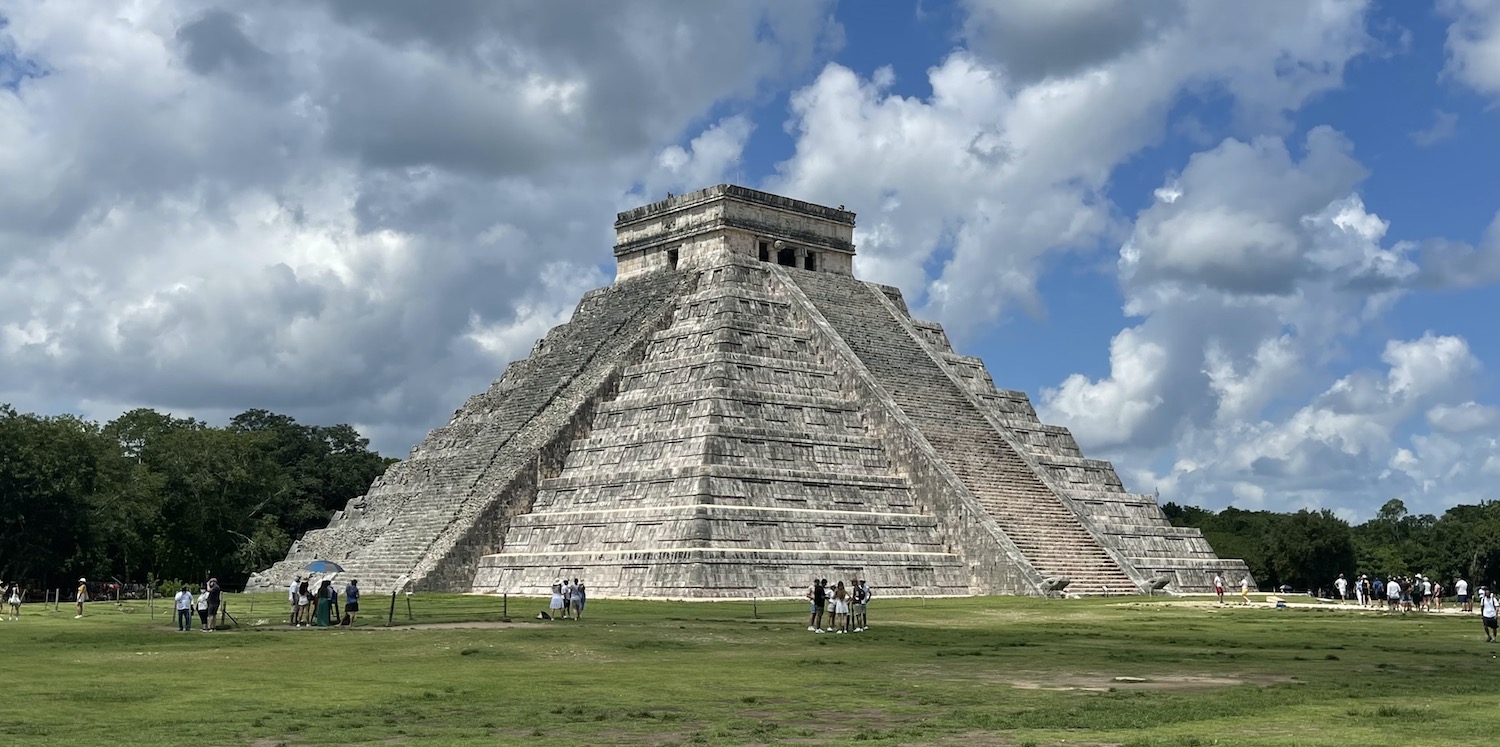
The acknowledged cultural capital of the Peninsula since the Spanish conquest in the sixteenth century, with colonial architecture and contemporary restaurants, is the town of Mérida, cute but not twee. Its zocalo is large and pretty: the central topiary trees and popular giant seats-for-two give a modern juxtaposition to the ancient buildings that surround it. The Cathedral de San Ildefonso, 1598, was the first to be completed on the mainland of the Americas.
The narrow cobbled streets between leafy plazas are decorated with pot plants and old-fashioned lamps, and the museums, galleries and historic mansions – notably Casa de Montejo and Palacio Canton – are gorgeous. Everything looks in mint condition, but not in a way that just targets tourists, who head to Parque Santa Lucia for comidas and bebidas and serenades, and to Gran Mercado Maya for genuine crafts of quality. The former governor’s residence has been turned into the Mansion Mérida Hotel, which has a café terrace ideal for people-watching on the same little square as the Gran Hotel. There are more modern hotels at the top of the iconic 6km Paseo de Montejo, an enchanting avenue that is constantly compared to the Champs–Élysées.
The Ruta Puuc south of Mérida is a line of Mayan ruins in the puuc style, meaning on small hills as opposed to flat land like most of the Peninsula. They encompass Grutas De Loltún, Labna, Xlapak, Savil, Kabah and, most important, Uxmal (“Oosh-mal”). For the same reasons as Chichén Itzá, Uxmal is the second most visited site in Mexico. From the point of view of an independent traveller, it is a far better experience as it is over-run not by hawkers and tour groups but by iguanas. There are guides if you really want them of course, but there is also a well-marked route you can take on your own.
Campeche
Campeche is the least visited state on the Peninsula, simply because it is furthest from the mass tourism of Cancún. For me, that doubles its already considerable appeal. By now, there are no chain hotels, only boutiques, which are often both high quality and low cost, though most restaurants do continue the widespread practise of the bigger tourist places triggered by Covid of demanding that you download a QR code to access their menus.
The town of Campeche itself is one of the prettiest in the entire country. For starters, it is guarded by two picture-perfect Lego-like forts. The first, as you approach from the north, is the especially photogenic Fuerte de San Jose. The other, 4km southwest, Fuerte de San Miguel, is almost identical, but a bit bigger and with a museum inside. Between them is the 7km Malecon esplanade that has a path, cycle lane and public art under swaying palms.
Then the real gems are inside the Walled City, where the cobbled streets of one-storey colonial buildings in bright shades are as pretty as it gets. Pedestrianised Calle 59 is an arrow from the Angel Maya statue on the seafront, through the main gate, all the way to the far wall where you buy a ticket to walk the ramparts. All the way up are restaurants and bars, but the cutest is Luan, just after the first junction, which has four adorable small wooden tables standing alone in the middle of the street; it also serves a wonderful breakfast, which is a big thing in Mexico. Another fabulous place, which has at times served as a movie set, is Rincon Colonial, a cantina for tacos and tequila. It goes without saying that the zocalo and its church are of course delightful.
There are several heritage hotels inside the walls, including Hacienda Puerta, Casa Don Gustavo and Castelmar. Then there are a couple of highly rated seafood restaurants outside the walls: La Palapa del Tio Fito and La Pigua.
Haciendas were built by the Spanish conquerors from the sixteenth century in order to run plantations, but after Mexican independence in 1810 they began to fall into decay. These days, many have been restored and turned into upscale restaurants and hotels. There are many very good ones between Mérida and Campeche, including Santa Rosa, Temozon, San Jose and Uayamon.
The road south from Campeche briefly traces the coast before turning inland after the pretty town of Champotón, originally a Mayan settlement dating to the tenth century. Where the eponymous river empties into the Gulf of Mexico, behind the moored fishing vessels, is a long row of fabulously-named cocktelerias under rustic awnings.
There are of course many Mayan archaeological sites and you could waste a lot of time chasing them all down. You would be silly to miss the big tickets but you do not need to tick through the encyclopaedia. However, if I could choose only one to go to, it would undoubtedly be Calakmul, just 35km from the Guatemala border. Calakmul was the great rival to Tikal until its defeat in 700 AD, and it was later hidden in the jungle for more than a thousand years until it was rediscovered by the American botanist Cyrus Lundell in 1931.
Many traveller blogs seem to dispute how long it takes to get to Calakmul, though they all agree it is far too far and far too important to try it in a day trip from Campeche. It took us about three and a half hours to drive from Campeche to Conhuas and the turning off Highway 186 for the last 60km to the site itself. That final stretch is paved and gradually narrows to a single track, but it takes a good 90 minutes because of the bends in the road. Travelling it, under beautifully arched trees, you get a real sense of heading into the remote jungle.
About 4,000 people a day usually visit Chichén Itzá; here it is about 50. On the day we were here, we saw only a dozen other cars and we got familiar with the faces of the occupants as we all kept bumping into them along the way. There are plenty of gas stations all the way until Centenario, where it makes sense to fill up and use the ATM. After Conhuas, there are no food or drink outlets and very little English is spoken.
We broke our journey at Conhuas. Hotel Puerta Calakmul, left down a dirt track just before the main gate at the start of the final road to Calakmul, has good cabanas in the jungle that echo with the sound of howler monkeys, decent food and a fine drinks list; it takes only cash. The gate opens at 8am and in the car park at the site is a big map with three marked routes to explore: short, medium and long. You do not need a guide but you need a good half day to get round this home of toucans as well as five of the six species of big cats in Mexico: jaguars, which are close to extinction, plus pumas, ocelots, margay and jaguarundi.
The whole site is about 20km2. The central section is 2km2 and the ruins of its thousand structures are divided into three parts. First you come to the Pequena Acropolis in the east, with the Gran Acropolis in the west, and between them the Gran Plaza.
The Pequena Acropolis are small buildings of dwellings. The Gran Acropolis includes the imposing pyramid, Structure I. Not only are you permitted to climb the pyramids, unlike at the mainstream sites, but it is essential that you do. The top of Structure I gives a full 360° view to the horizon revealing dense jungle like florets of broccoli as far as the eye can see in all directions. Now you know how remote it is.
The jungle has also consumed the Gran Plaza, which adds hugely to the haunting experience. Calakmul means “two adjacent mounds” and they are found here, only a couple of hundred metres apart. From the top of each of the pyramids of Structure II, 50% taller than Chichén Itzá, and Structure VII, you see the peaks of the other poking out above the jungle. It a truly magical place.
South Quintana Roo
From Conhuas it takes two hours to drive east to Chetumel, from where it would be another five hours straight back north to Cancún. But we drove two and a half hours to Xcalak (“Ish-cal-ak”), population 375 and proud to be off the grid – there is no gas and no internet – on the unspoiled southern coastline, 10km from the Belize border. The place to stay here is Costa de Cocos, with a superb restaurant, lovely cabanas on the beach, a relaxing soundtrack of moody blues, and facing fabulous sunrises of flaming red. There are two reasons for coming here. One, fly fishing in Chetumal Bay. Two, diving with manatees just off the coast and at the Banco Chinchorro reef way out to sea; XTC dive centre is the place to go.
Forging a different tourism economy to Xcalak, the quiet fishing village of Mahahual, just up the coast, has recently started taking cruise ships. There are still loads of great beach club hotels here right now, but change is definitely coming.
Change has already visited the region between Mahahual and Cancún. I was last in the Yucatán Peninsula twenty years ago and this coastline, since then aggressively marketed as the Riviera Maya, has been transformed. Tulum was a small town with some Mayan ruins, and Playa del Carmen was a fishing village with a cool beach vibe. More change is coming too: Tulum will soon have its own international airport and new train stations will facilitate easier internal travel.
Now a major tourist destination in its own right, people come to Tulum for the ruins, the beaches and the cenotes.
The ruins have archaeological significance as one of the last cities to be built by the Maya, and the port was at its height between the thirteenth and fifteenth centuries. There are no big or individually impressive buildings, though the location on 12m cliffs above the beach is pretty. It is usually swarming with coach parties, as evidenced by the vast hawker markets you have to walk past to get to the entrance, but we were privileged to be here with only a few dozen people.
The beaches are at the end of Tulum Avenue, off Highway 307: turn right for Tulum beach, full of cool clubs and little bars on their own patch of sand but with an obvious community spirit; turn left for Paraiso beach, with bigger hotels on broader stretches of sand keeping themselves to themselves. Globalisation has not yet hit as there are no chain resorts, just higher end local boutiques with a Bohemian vibe throughout.
The cenotes, freshwater springs in limestone sinkholes, often connected to cave systems, were considered sacred by the Maya. There are 7,000 on the Peninsula and a significant proportion are concentrated around Tulum. Many are picturesque, so some have been turned into tourist traps with walkways and swings, but the best way to properly experience them is to dive them.
Sac Actun is the longest underwater cave system in the world, at 370km, and a sub-section of it, Parque Dos Ojos, presents any easy opportunity to dive as kit tables and other facilities have been built around the entrances. Particularly impressive are Batcave, because of the chance to go in a long way with guide lines, and El Pit, which has stunning light that can be seen from down at 40m.
There are loads of dive shops. We used Ko’ox, primarily because they also offer one particularly special opportunity. At Casa Cenote, a relatively small cave, we did a night dive. With crocodiles. Crocodiles! We came within a couple of metres of one 1.5m monster that swam through my torch light. I took this picture on a GoPro from below, and you can see very clearly the teeth in its gaping mouth as well as its reflection in the surface of the water just above. That was quite the adrenaline rush.
A little less life-threatening are the ruins at Cobá, which seem mostly to be done as an add-on to day trips from Cancún to Tulum and therefore there is still not much of a town here. It is a big site, and the best way to get around it is to hire rickety old bicycles or colourful tricycle taxis to ride along the pleasant sandy tracks under arched shading trees. It is 4km past various rubble buildings to find the main pyramid, Nohoch Mul.
Even ten years ago Playa del Carmen was not much more than a fishing village but now it has expanded into a mini-Cancún, albeit with a younger European crowd. The main drag, Calle 5, one block back from the shore, has loads of tat shops that give a more hippie feel mingled among booming nightclubs whose hoardings proclaim “big boobs get a free shot” and where T-shirts scream “one tequila, two tequila, three tequila, floor”.
There is no doubt, though, that the beach is pretty. There are masses of loungers at thatched beach clubs all along the white sand, on which toplessness is permitted, which in another change from two decades ago is discouraged in most of the country. Even here, the global resort chains are restricted to the outskirts and the centre is dominated by local hotels.
From Playa del Carmen there is one car ferry (Transcaribe) and two passenger services (Ultramar and Winjet) to Cozumel, visible on the horizon an hour away. There are also cruise ships that must swamp the main square when they pull in.
For accommodation, you have two options. Either in town, where there are some boutiques fighting against the demands of the cruise shippers; for instance, Casa Mexicana on the front has a simple but thoughtful design ethic. Or on a beach, which are otherwise hard to access; most are all-inclusive but the InterContinental Presidente is a good choice near the marina just south of town.
Cozumel is at the top of the Mesoamerican coral reef, the second longest on earth, stretching 1,000km south to the Bay Islands in Honduras (where I did my PADI Open Water many years ago). It has an excellent reputation for diving, and although it is not in the first division with places like Palau and Sudan, and it does not have anything like as much marine life as Baja California on the Mexican Pacific, it is about as good as it gets in a mainstream tourist destination.
There are over a hundred dive shops on the island, most booking clients for packages of two tanks, in the morning and again in the afternoon, making a virtue of taking groups no larger than half a dozen. So it is diving on an industrial scale but with as much of a boutique touch as possible. In such a popular destination, of course you may well find some on your boat cannot really dive, but this is Mexico and they will find a way for you to stay down when others have sucked through their air.
The reef is a long wall with gardens of hard and soft coral on top. The excellent visibility and strong sunlight project vibrant colours amid the fun swim-throughs. The most acclaimed sites are around Colombia and Palenka on the south west corner. Most fun, there is always strong current so it’s all flying along on drift dives.
Maybe it was because we came during Covid when most of the American package tourists were absent, but Cancún was not as bad as I had feared. Obviously, it’s not an important part of this trip, but it’s all part of it and you have to experience it. Almost a million people live in the city and its topography is undeniably beautiful: like an enlarged version of Miami, a spectacular 20km arm holding a thin strip of hotels on a white beach facing a turquoise sea reaches out from the mainland to the other side of a pretty lagoon.
When development began here on 23 January 1970, there was not one resident on this virgin land and in the race to build the scores of resorts in various shades of brown that stand shoulder-to-shoulder each with their own private beach it is obvious that aesthetics were sacrificed for scale. The beaches are rarely full though, given the habit of American tourists of standing chest-high in the pool holding a can of beer.
There is only one public beach, to the south opposite the El Ray archaeological site, near where everyone lines up to have their photo taken with the Cancún sigh. This happens in most pueblos on the Peninsula, but this is of course the most popular. The sea all the way along is buzzing with every kind of water sport.
There are shopping malls and restaurants on the side of the strip facing the lagoon and the sunset too. Various all-day excursions of confected amusements involving aquariums, dinner-shows and zip wires will all be thrust at you but they are easily avoided, as are the spring breakers with cartoon-sized margaritas at Coco Bongo and Señor Frog’s. These guys know their market and they are catering to it. But one trip worth the effort is to dive the “underwater museum” off Isla Mujeres. Half a dozen substantial pieces of art on the sea bed, near the little reef swarming with sea life, are great fun. Like Cancún in general, it is perhaps not as authentic as some of the places way beyond the obvious on the Peninsula, but it is still entertaining in its way. Hasta la vista.
